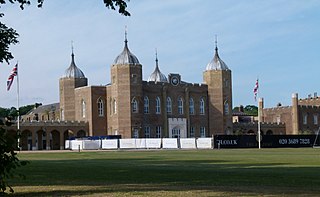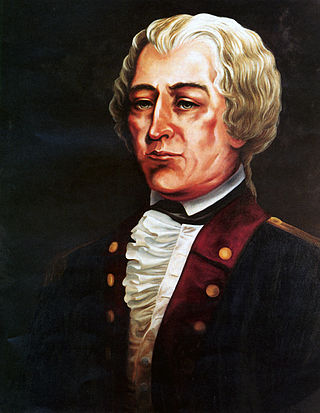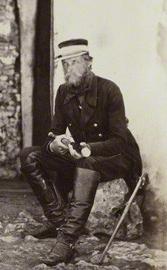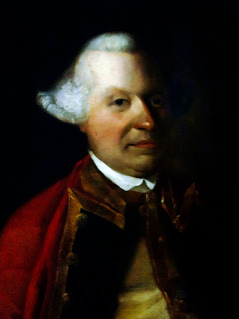Related Research Articles

The Royal Regiment of Artillery, commonly referred to as the Royal Artillery (RA) and colloquially known as "The Gunners", is one of two regiments that make up the artillery arm of the British Army. The Royal Regiment of Artillery comprises thirteen Regular Army regiments, the King's Troop Royal Horse Artillery and five Army Reserve regiments.

Woolwich is a town in southeast London, England, within the Royal Borough of Greenwich.

The Royal Military Academy (RMA) at Woolwich, in south-east London, was a British Army military academy for the training of commissioned officers of the Royal Artillery and Royal Engineers. It later also trained officers of the Royal Corps of Signals and other technical corps. RMA Woolwich was commonly known as "The Shop" because its first building was a converted workshop of the Woolwich Arsenal.

The Royal Arsenal, Woolwich is an establishment on the south bank of the River Thames in Woolwich in south-east London, England, that was used for the manufacture of armaments and ammunition, proofing, and explosives research for the British armed forces. It was originally known as the Woolwich Warren, having begun on land previously used as a domestic warren in the grounds of a mid-16th century Tudor house, Tower Place. Much of the initial history of the site is linked with that of the Office of Ordnance, which purchased the Warren in the late 17th century in order to expand an earlier base at Gun Wharf in Woolwich Dockyard.

Woolwich Common is a common in Woolwich in southeast London, England. It is partly used as military land and partly as an urban park. Woolwich Common is a conservation area. It is part of the South East London Green Chain. It is also the name of a street on the east side of the common, as well as an electoral ward of the Royal Borough of Greenwich. The population of the ward at the 2011 Census was 17,499.

General Sir John Miller Adye was a British soldier and amateur artist.
The Royal Irish Artillery was an Irish regiment of the British army in the 18th century. It was formed in 1755 as The Artillery Company of Ireland. The name was changed in 1760 to The Royal Regiment of Irish Artillery.

John Doughty was an American military officer who briefly served as the senior officer of the United States Army in 1784. Holding the rank of major at the time, he bears the distinction of being the lowest ranked individual ever to serve as the senior most United States Army officer.

Field Marshal Sir Richard James Dacres, was a British Army officer during the nineteenth century. Born into a substantial naval dynasty, he would achieve similar status in the military, commanding three troops of Royal Horse Artillery at the Battles of Alma in September 1854, Balaclava in October 1854 and Inkerman in November 1854, and throughout the Siege of Sevastopol during the Crimean War and eventually rising to the rank of field marshal.
General Sir John Smith was a British army general. In his early career as a Royal Artillery officer he fought in the American War of Independence, being twice captured and imprisoned by the Americans. In his later career Smith was involved in expanding the British Empire in the West Indies by protecting its trade routes, helped keep control of the islands of Gibraltar and Madeira and commanded various artillery regiments.
Stephen Payne Adye was an English brevet-major of the Royal Artillery.
Lieutenant-General Sir William Brereton was a British Army officer of the nineteenth century who served as colonel-commandant of the 4th Brigade, Royal Horse Artillery in the 1860s.
General Sir Anthony Farrington, 1st Baronet DCL was a British Army officer of the Royal Artillery. He served in Gibraltar and in the American War of Independence.

General William Belford was a British artillery officer who began his career in 1726. He was part of the first generation of artillery officers selected and promoted on merit, rather than connections.

General Sir William Green, 1st Baronet, of Marass, Kent was an officer in the British Army.
Albert Borgard was a Danish artillery and engineer officer.
Major-General James Murray Hadden was a British Army officer and surveyor-general of the ordnance.
Lieutenant-General Thomas Desaguliers was a British Army general and a Colonel Commandant of the Royal Artillery.

The Corps of Royal Artillery Drivers was a British Army corps founded in 1793 and disbanded in 1822. It was established to provide trained and disciplined drivers for the Royal Artillery, a service that had previously relied upon civilian contractors. Though closely associated with the Royal Regiment of Artillery the corps was listed separately from it in the London Gazette until at least 1815. By 1814 the corps numbered more than 7,400 men and fielded more than 2,600 men at the 1815 Battle of Waterloo. The unit was reduced in size after the end of the Napoleonic Wars and disbanded in 1822 by the Duke of Wellington.

Gother Mann was an English army officer and military engineer in the Royal Engineers. He commanded a body of militia on Dominica when the island was captured by the French in September 1778, and his small garrison, outnumbered, surrendered on terms.
References
- ↑ Yates, Samuel (1820). An History of the Ancient Town and Borough of Congleton. Congleton: Samuel Yates. pp. 92–95.
- ↑ Browne, James Alex. (1865). England's Artillerymen; an Historical Narrative of the Services of the Royal Artillery. London: Hall, Smart and Allen. p. 11.
- ↑ "Died", Morning Chronicle, London, 4 March 1805
- ↑ Guggisberg, R.E., Captain F.G. (1900). "The Shop": The Story of the Royal Military Academy". London: Cassell & Co. Ltd.
- 1 2 3 4 Duncan, Francis (1879). History of the Royal Regiment of Artillery (1716-1783): Compiled from the Original Records. Vol. 1. London: John Murray.
- ↑ Francis, A. D. (1981). "The Campaign in Portugal, 1762". Journal of the Society for Army Historical Research. 59 (237): 25–43. ISSN 0037-9700. JSTOR 44229508.
- ↑ "ODNB Adye, Stephen Payne". Oxford Dictionary of National Biography (online ed.). Oxford University Press. doi:10.1093/ref:odnb/177.(Subscription or UK public library membership required.)
- ↑ "The unsuccessful American attempt on Verplanck Point, July 16-19, 1779". Journal of the American Revolution. 10 September 2014. Retrieved 2 December 2018.
- 1 2 "The James Pattison Papers". The Loyalist Collection. University of New Brunswick. Retrieved 2 December 2018.
- ↑ Roche, John David (2011). From Commander to Commandant: The Transformation of British Major General James Pattison During the American War of Independence, 1777 – 1780 (PhD). University of North Carolina at Chapel Hill.
- 1 2 Hill, Rosemary (January 1996). "A. C. Pugin". The Burlington Magazine. London. 138 (1114): 11–19.
- ↑ "Portrait of General James Pattison (1723-1805) Three-Quarter-Length, in Military Uniform, Holding…". Art.com. Art.com Inc. Retrieved 3 December 2018.